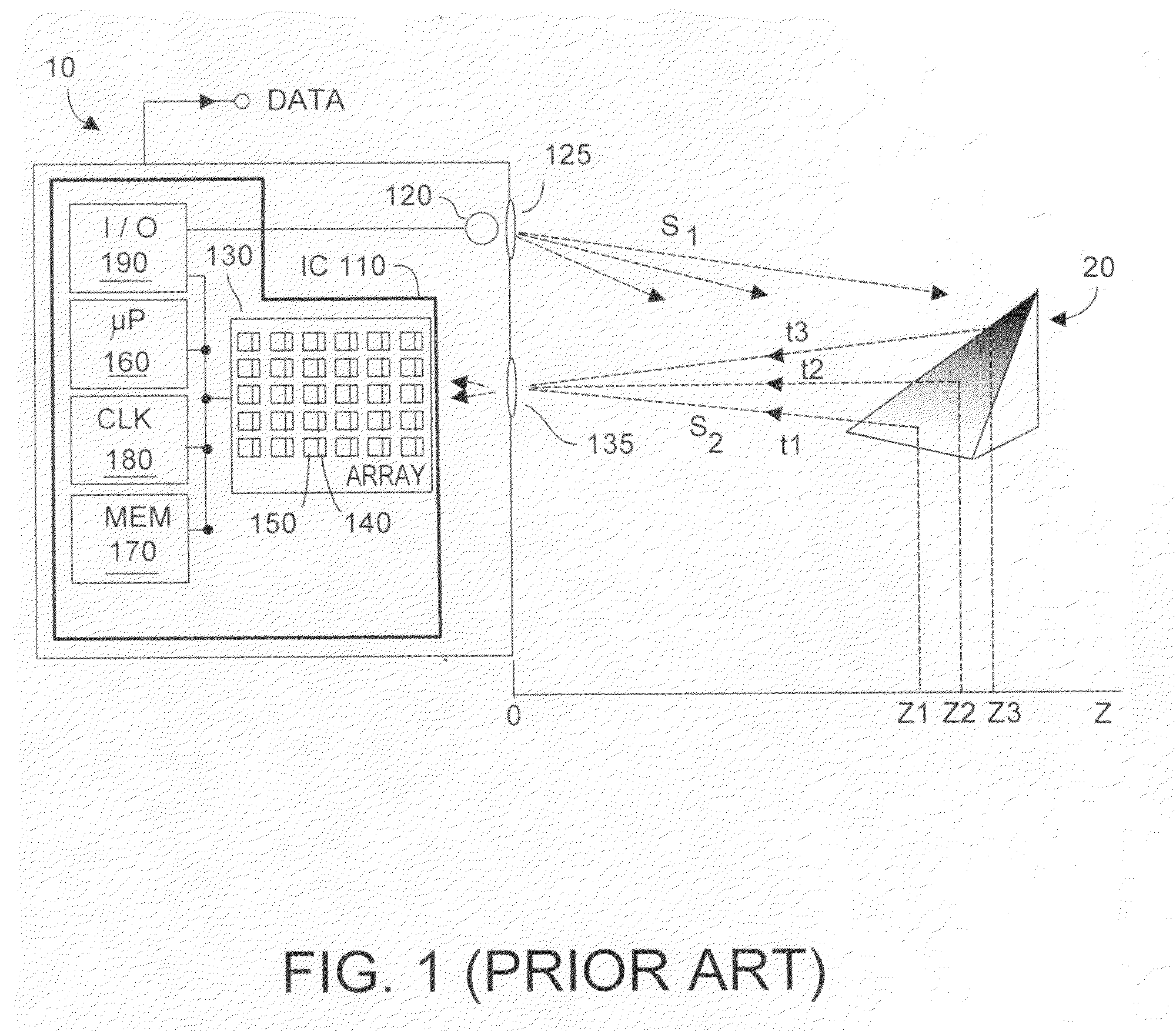Method and system to reduce stray light reflection error in time-of-flight sensor arrays
a sensor array and time-of-flight technology, applied in the field of differential pixel sensor arrays, can solve the problems of stray light reflection error in time-of-flight sensor arrays, reduce the effect of reflection, and reduce the mal-effect of stray radiation
- Summary
- Abstract
- Description
- Claims
- Application Information
AI Technical Summary
Benefits of technology
Problems solved by technology
Method used
Image
Examples
Embodiment Construction
[0037]Referring to FIG. 3A, in a perfect time-of-flight (TOF) system 100, there would be a one-to-one relationship between points on the imaged surface of target object 20 and detector pixels 140 within array 130. But in a practical TOF system, some portion of the optical energy, or light, received at a given pixel within array 130 is actually light intended for another pixel. This amount of misdirected light (termed stray light herein) is usually small and is not a cause for concern. However in high performance TOF systems this parasitic stray light can lead to substantial measurement errors. Although descriptions herein will primarily be given with respect to phase-type differential TOF systems, it is to be understood that haze-type correction can be made to non-phase type TOF systems, according to embodiments of the present invention.
[0038]Stray light can be due to a number of sources and can have a number of characteristics. Stray light may arise from focus error, and / or haze or...
PUM
 Login to View More
Login to View More Abstract
Description
Claims
Application Information
 Login to View More
Login to View More - R&D
- Intellectual Property
- Life Sciences
- Materials
- Tech Scout
- Unparalleled Data Quality
- Higher Quality Content
- 60% Fewer Hallucinations
Browse by: Latest US Patents, China's latest patents, Technical Efficacy Thesaurus, Application Domain, Technology Topic, Popular Technical Reports.
© 2025 PatSnap. All rights reserved.Legal|Privacy policy|Modern Slavery Act Transparency Statement|Sitemap|About US| Contact US: help@patsnap.com



